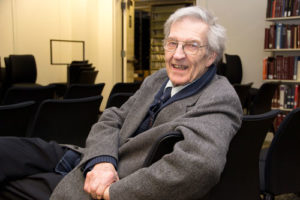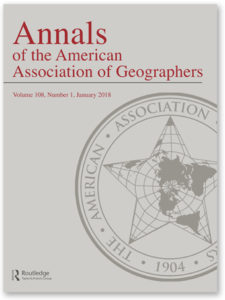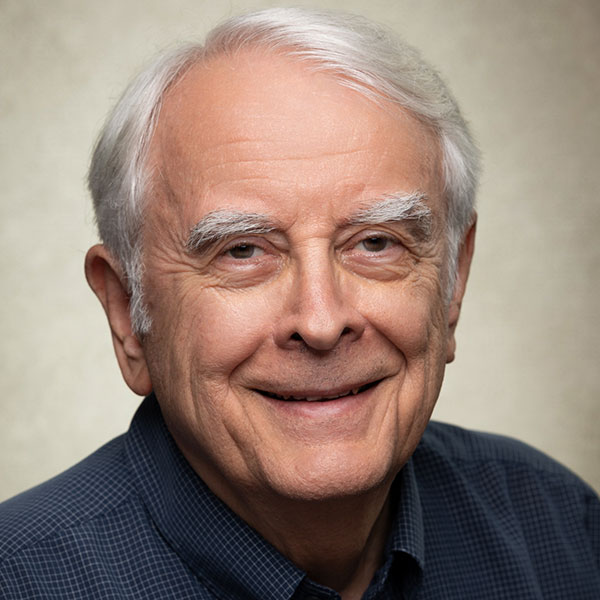AAG Archivist Geoffrey Martin Provides Rare Glimpses into the History of Geography
 A near-capacity crowd gathered on January 21, 2016, in the Geography and Map Division at the Library of Congress in Washington, D.C., to hear a talk by the doyen of the history of geography, Dr. Geoffrey J. Martin, Professor Emeritus at Southern Connecticut State University and the official archivist of the American Association of Geographers (AAG) for more than 30 years.
A near-capacity crowd gathered on January 21, 2016, in the Geography and Map Division at the Library of Congress in Washington, D.C., to hear a talk by the doyen of the history of geography, Dr. Geoffrey J. Martin, Professor Emeritus at Southern Connecticut State University and the official archivist of the American Association of Geographers (AAG) for more than 30 years.
Martin was invited to speak about his new book, American Geography and Geographers: Toward Geographical Science, which was published in 2015 by Oxford University Press. However, his talk was as much an account of his own career-long journey to collect material and write about the history of American geography as about the book itself.
As a young academic, Martin was drawn to three figures in American geography, who had shaped the discipline in the first half of the twentieth century: Mark Jefferson, Ellsworth Huntington and Isaiah Bowman. All studied at Harvard under William Morris Davis, the man who played a founding role in the establishment of the academic discipline in America. While Davis’s work focused on ‘physiograhy,’ his three disciples pursued new directions in geography which examined the physical earth as the home of man: Jefferson with anthropography; Huntington with physical climatology; and Bowman with the concept of region.
Over the years, Martin systematically collected archival information on the life and work of these three geographers which was published respectively as Mark Jefferson: Geographer (1968), Ellsworth Huntington: His life and thought (1973), and The life and thought of Isaiah Bowman (1980).
Following the publication of this trilogy, Martin then set out on a grander project: to tell the larger story of American geography and geographers. The recently published title covering the period from 1870 to 1970 took 17 years to research and write. It is a testament to Martin’s meticulous attention to detail — pursuing every lead, uncovering every possible manuscript, and tracking down every living person to interview.
Martin is an archivist extraordinaire. In the course of more than five decades of research, he visited 17 countries, consulted 300 archival holdings, accumulated 115,000 manuscripts, and personally corresponded with more than 100 people.
What came across during his presentation was Martin’s sense of sheer pleasure and privilege at being able to work with the living relatives of the key scholars in the book, including weekly lunches with Ellsworth Huntington’s wife and four successive summers spent in the basement of Isaiah Bowman’s son, Bob. He also told stories about some of the challenges and frustrations of working with archival material, from a will that prevented access for 50 years (which he negotiated with the family down to 25 years) to a son who ceremonially burned manuscripts from his father’s archive from time to time. During the Cold War, he also had to defend himself during the McCarthy investigations after a colleague turned him in for allegedly being a Communist sympathizer. The unjustified evidence was a small set of Russian books on chess strategies from when he was a world-class champion of the game.
Martin, now in his early 80s, is truly of the old school. He has not embraced modern technology, which makes one respect his research and writing even more — from his correspondence carried out by hand-written letter to his dedication in answering geography questions via telephone at any time of day or night.
Martin’s expansive and in-depth knowledge of the history of geography and geographers is unparalleled. Through his exposition of the main characters in American geography, one feels to have actually met them personally. The joy of listening to Geoffrey Martin is the combination of hearing an authoritative scholar, as well as an entertaining raconteur.
Sadly, these days the history of geography is not a particularly popular sub-discipline, but geographers of all ages and all nations ought to pay heed to Geoffrey Martin’s landmark text, American Geography and Geographers.
Ralph Ehrenberg, Chief of the Geography and Map Division at the Library of Congress, and Douglas Richardson, Executive Director of the AAG, took the opportunity to not only honor Martin at Thursday’s event, but also to introduce the recent agreement of the consolidation of the AAG’s century-plus old archives to the Library of Congress. Collections are currently being moved from several scattered locations to this central place, which will make many important and rare materials available to scholars and historians worldwide. In celebration of this, and to complement Martin’s talk, the Geography and Map Division displayed unique and rare historic maps, documents and other artifacts.


